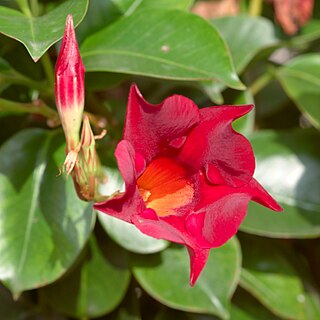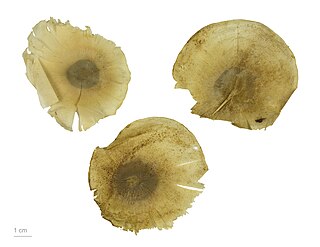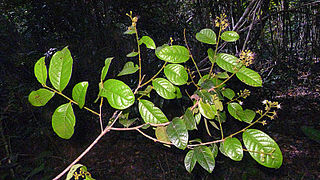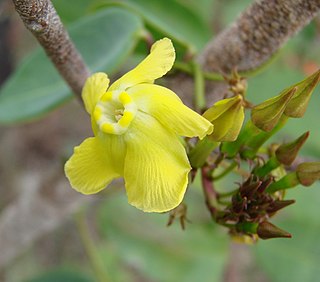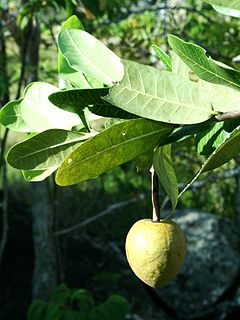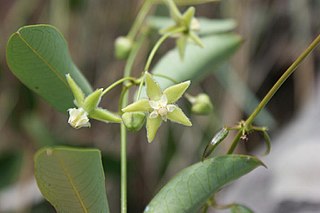| Spongiosperma | |
|---|---|
| Scientific classification | |
| Kingdom: | Plantae |
| Clade: | Tracheophytes |
| Clade: | Angiosperms |
| Clade: | Eudicots |
| Clade: | Asterids |
| Order: | Gentianales |
| Family: | Apocynaceae |
| Subfamily: | Rauvolfioideae |
| Tribe: | Tabernaemontaneae |
| Subtribe: | Ambelaniinae |
| Genus: | Spongiosperma Zarucchi |
Spongiosperma is a genus of plant in family Apocynaceae first described as a genus in 1988. It is native to the South America, nations of Venezuela, Colombia, and Brazil. [1] [2]
- Species [1]
- Spongiosperma cataractarum Zarucchi - Bolívar State in SE Venezuela
- Spongiosperma grandiflorum (Huber) Zarucchi - Amapá, Pará, Maranhão
- Spongiosperma longilobum (Markgr.) Zarucchi - Amazonas State in NW Brazil
- Spongiosperma macrophyllum (Müll.Arg.) Zarucchi - S Venezuela, SE Colombia, NW Brazil
- Spongiosperma oleifolium (Monach.) Zarucchi - Amazonas State in S Venezuela
- Spongiosperma riparium (Monach.) Zarucchi - S Venezuela, SE Colombia
